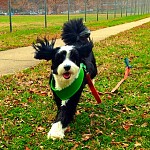Top 12 Training Tips
Contrary to what you may have heard, you absolutely can teach an old dog new tricks. Training is an excellent way to bond with your furry friend, and encourages overall better behavior. From new puppies trying to understand “sit” to adult dogs going for certification in canine therapy, dogs always have room to learn and grow.



